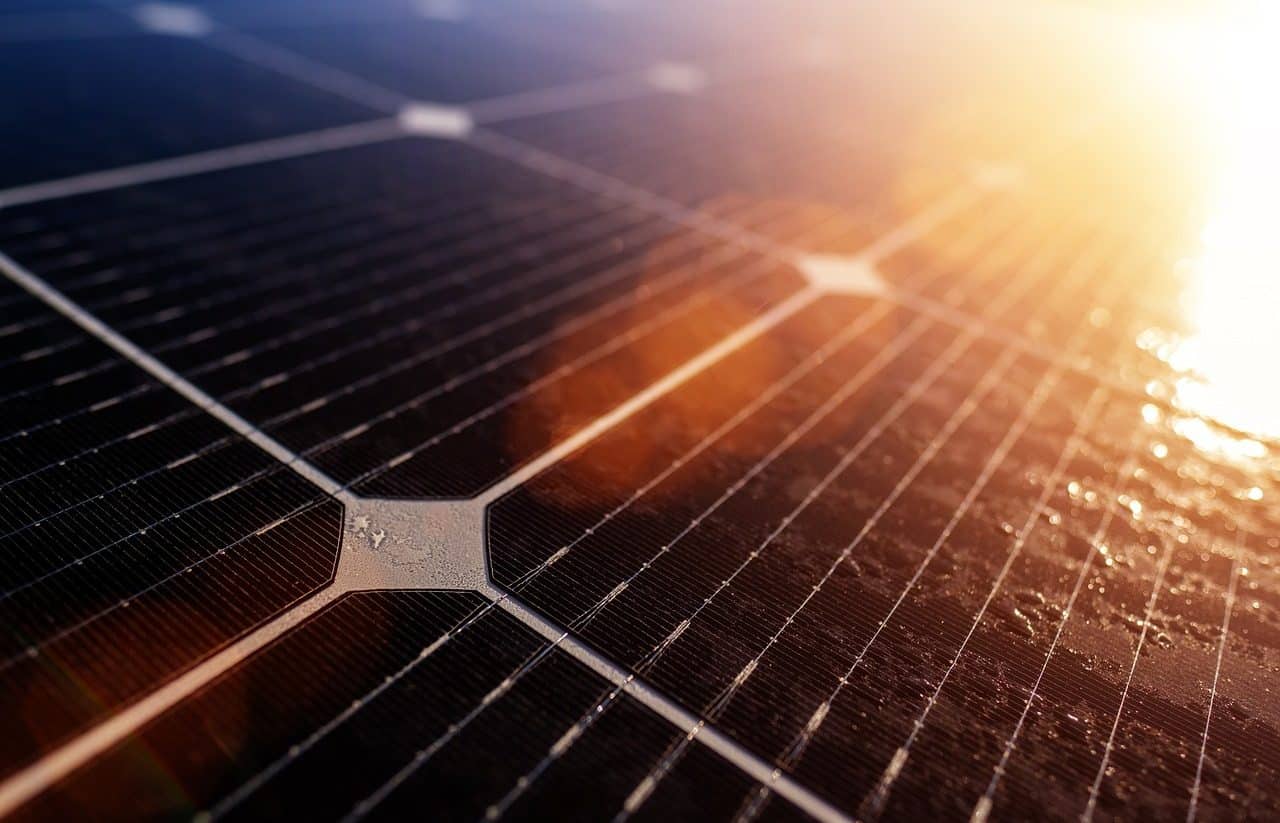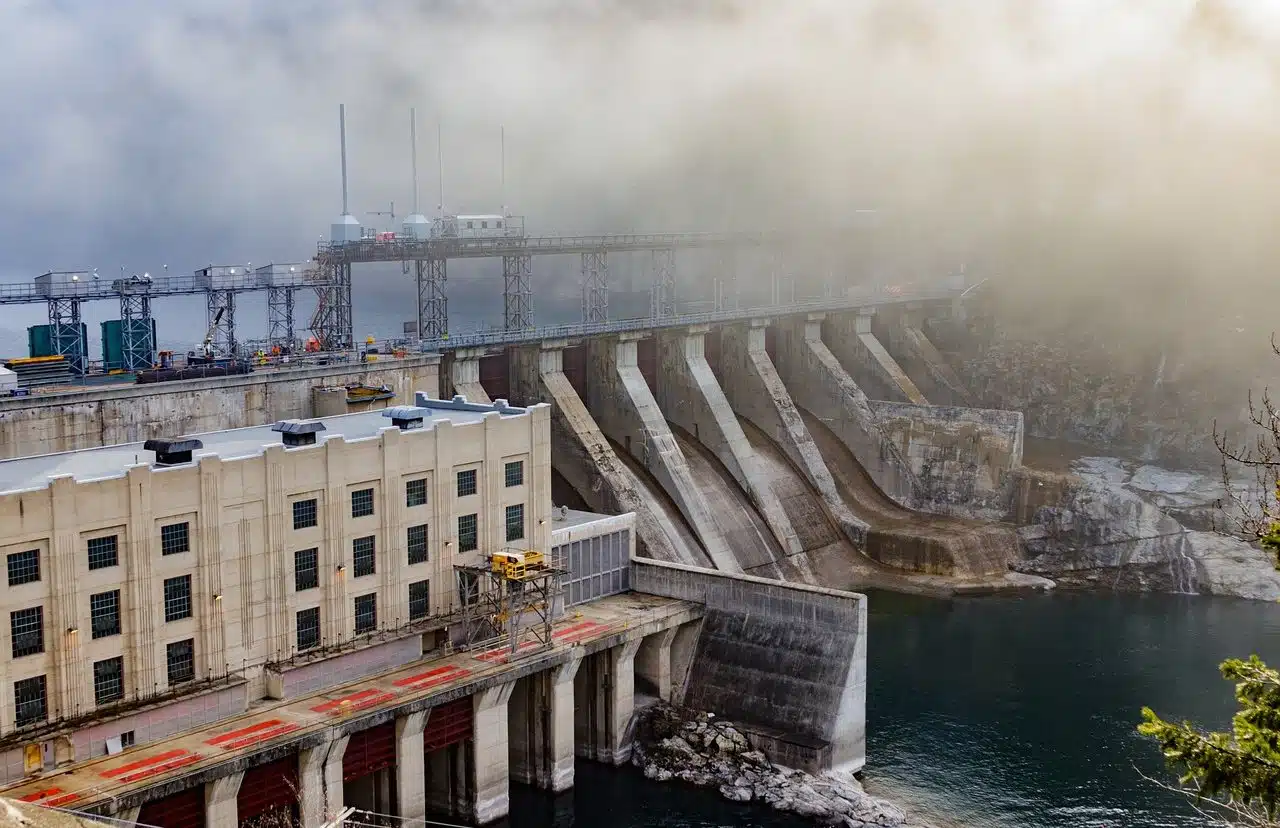
Solar panels allow solar energy to be converted into electricity.
Energy conversion is the process by which one form of energy is transformed into another. This includes, for example, converting chemical energy into thermal energy through combustion, or converting solar energy into electrical energy using solar panels. This process is fundamental in various technological systems and devices to carry out work, generate electricity and satisfy energy needs.
Types of energy conversion
There are multiple types of energy and various ways to convert them, each with specific applications and different benefits. Some of the main ones are detailed below.
Kinetic energy
It is the energy that an object has due to its movement. It can be converted into electrical energy through generators that transform mechanical movement into electricity .
Biomass energy
It comes from organic materials and can be converted into thermal energy or liquid or gaseous biofuels to produce electricity. The conversion is carried out through processes such as combustion , fermentation or anaerobic digestion.
fusion energy
It is the process that powers the sun and stars, where light atomic nuclei combine to form heavier nuclei, releasing enormous amounts of energy. Although currently a developing field, nuclear fusion has the potential to be a nearly unlimited source of clean energy .
wave energy
Take advantage of sea waves to generate electricity. This is achieved through devices that capture wave motion and convert it into mechanical energy , which is then transformed into electrical energy.
Electrical energy
It is a form of energy that results from the existence of a potential difference between two points. It can be generated from various sources, including renewable energies such as solar, wind and geothermal.
wind energy
It is obtained from the wind. Using wind turbines, the wind rotates the blades, which converts the kinetic energy of the wind into mechanical energy and then into electricity.
Geothermal energy
It is extracted from the internal heat of the Earth. It can be converted into electrical energy through geothermal power plants, which use the steam produced by underground heat to drive turbines.
Hydropower
It is generated from the movement of water, usually in rivers and reservoirs, which is used to spin turbines that generate electricity in dams or hydroelectric plants.
clean energy
It refers to energy sources that do not emit pollutants into the environment. For example: solar , wind and geothermal energy, among others.
Tidal energy
It is obtained from the tides. The difference in height between high and low tide is used to generate electricity through turbines installed in strategic locations.
mechanical energy
It is the sum of the kinetic energy and potential energy in a system. It can be converted into electrical energy using generators and other mechanical devices.
Nuclear power
It is generated from the fission of heavy atoms such as uranium . This process releases a large amount of energy that can be used to produce electricity in nuclear power plants.
Osmotic energy
Also known as blue energy , it is obtained from the salinity differential between seawater and freshwater. This can be used to generate electricity.
Potential energy
It is the energy stored in an object due to its position or configuration. It can be converted into kinetic energy and then into other forms, such as electrical energy.
chemical energy
It is stored in the chemical bonds of molecules and can be released during chemical reactions. It is converted into electrical energy in batteries and fuel cells .
Solar energy
It is obtained directly from the sun. Using solar panels, solar radiation is converted into electricity or thermal energy.
thermal energy
It is the internal energy of a system due to its temperature. It can be used to generate electricity in thermal power plants by converting heat into mechanical energy.
These types of energy conversion are fundamental for the development of sustainable energy and the diversification of energy sources, allowing a transition towards more efficient and less polluting systems .

Wind turbines harness the energy of the wind.
Basics
Energy conversion is governed by physical principles and laws that are fundamental to understanding its nature and efficiency.
Energy Conservation Laws
Energy cannot be created or destroyed; it can only be transformed or transferred between systems. This implies that the total amount of energy in an isolated system remains constant over time. The input energy must be equal to the output, taking into account the losses and transformations during the process.
Laws of thermodynamics
They are fundamental principles that govern energy conversion and thermodynamic processes. The most relevant for energy conversion are:
- first law of thermodynamics : states that the total energy in a closed system is conserved. It cannot appear out of nowhere or disappear without a trace; it is always preserved in some form;
- second law of thermodynamics : states that the entropy of an isolated system always increases or, at best, remains constant in a reversible process. It implies that natural processes tend toward states of greater disorder or entropy . In the context of energy conversion, the second law imposes limits on the efficiency of any energy conversion process, since there will always be losses of useful energy in the form of unusable heat.
Energy efficiency regulations
Energy efficiency is a measure of how much useful energy is obtained from a source compared to the total amount of energy used. Energy efficiency regulations establish standards and regulations to ensure that energy conversion devices and processes are as efficient as possible . They may include design requirements, emission limits, and energy consumption standards for equipment and systems.

In hydroelectric dams, electricity is generated from the movement of water.
Renewable energy and sustainability
Renewable energy plays a crucial role in the transition to a more sustainable energy system. These alternative energy sources are characterized by their ability to regenerate naturally at a speed greater than their consumption. Its environmental impact is much lower than that of fossil fuels and is ideal for reducing greenhouse gas emissions.
Energy storage
One of the challenges of renewable energies is their intermittency and variability. Energy storage plays a crucial role in mitigating these effects and ensuring a continuous and reliable supply of electricity .
Storage technologies include:
- batteries – used on both a small scale (e.g. in residential photovoltaic systems) and large scale (in wind or solar farms) to store energy and release it as needed;
- thermal storage – used in solar thermal systems and geothermal power plants to store heat and use it later to generate electricity or heating;
- Hydrogen – can be produced by electrolysis of water using renewable electricity and then stored for later use in fuel cells or to generate electricity at times of high demand.
Smart grids
They represent an evolution in traditional electrical infrastructure. They use advanced communication, control and automation technologies to optimize the generation, distribution and consumption of electricity.
